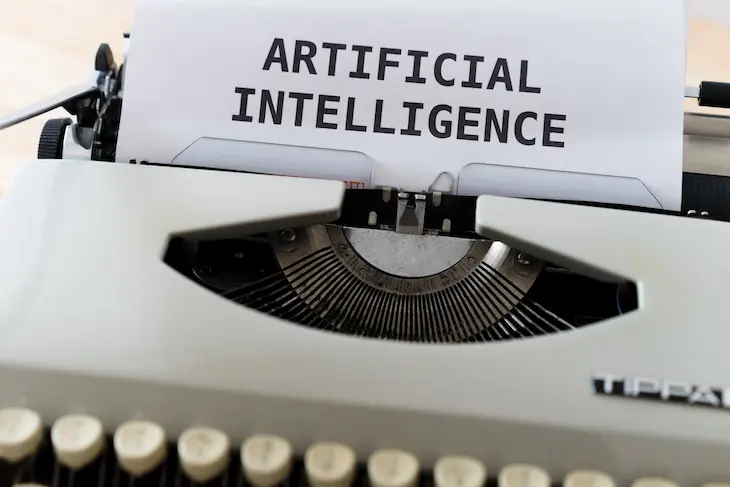The increasing use of AI in student works in 2025 reflects a transformative era in education. This new trend comes with unique benefits and educational opportunities along with new challenges and ethical considerations. At the heart of this evolution is the growing volume of school and student work created with AI powered writing tools. Thus, some academic writing AI tools can help students achieve better results in creative work much faster. However, they may also harm students’ ability to apply critical thinking and creativity in their academic work.
These pros and potential cons emphasize the need for careful and thoughtful integration of AI in educational settings and the impotence of its responsible use, especially when it comes to creative and analytical work.
As educators and students continue to navigate this evolving landscape, it is essential to balance the advantages of AI in education and preserve the core principles of academic writing that nurture creativity, critical thinking, and a lifelong love for learning. So, let’s explore how the educational system and students can use AI to do more good than harm with their studies. Here’s a brief guide on the present and future of AI automatic writing tools in education.
The AI Revolution in Education
The journey of AI in academia is one marked by evolution and innovation. Initially a tool for data analysis and administrative tasks, AI has now permeated every aspect of education. For example, free AI tools for content writing have become integral to academic pursuits, offering students assistance in crafting well-structured and grammatically sound content. These tools enhance writing proficiency and foster critical thinking as students engage with the technology.
However, concerns arise regarding overreliance on AI, potentially obstructing genuine intellectual growth and creative thinking. The widespread use of AI writing generator tools prompts a reevaluation of traditional educational methods. Educators learn how to balance the benefits of technological assistance with the need to promote independent work and creativity by educating steins about AI's ethical use and implementing tools to detect AI writing. As AI continues to shape educational methodologies, thoughtful integration is essential for a holistic learning experience.
Nonetheless, despite the initial risks, AI adaptations in the school system can bring more benefits than imagined. For example, AI technology can aid educators in curriculum design and assessment, facilitating the creation of engaging and effective learning materials. Thus, the evolution of AI in academia reflects a shift from a one-size-fits-all model to an adaptive, student-centric approach that considers the individual needs and pace of learners.
How Can AI Help or Obstruct Student Writing
A significant manifestation of AI's influence on education is its role in shaping student work. Beyond conventional research and content creation methods, AI technology can offer real-time feedback, guidance, and support. For students, this means more than just an extra set of digital eyes on their assignments – it's an opportunity to refine their writing, structure, and content, creating works that are not only academically sound but also polished and effective.
Integrating AI in student works extends to research processes, where AI tools for academic research empower students to explore their subjects comprehensively. These tools provide insights, recommendations, and efficient organization of vast amounts of information. Consequently, students can produce works that reflect a depth of understanding and draw from diverse sources, enriching the quality and depth of their academic endeavors. On the other hand, students can also use AI tools that generate academic text from notes. Thus, they can use technology to create original texts based on personal observations and notes.

Benefits and Opportunities
Integrating AI in student works unfolds new benefits and opportunities, reshaping the educational journey for students, parents, and educators. Personalization becomes a priority as AI adapts content delivery to individual learning styles and preferences, transforming the one-size-fits-all approach to education. Such a change ensures a more engaging learning process while addressing the unique needs of each student.
Furthermore, adopting AI brings about a profound transformation in administrative efficiency. Mundane and time-consuming tasks, such as grading and data entry, are automated, liberating educators to focus on the core of their profession – teaching. The resultant shift in workload distribution contributes to a more productive and fulfilling educational experience. With routine tasks handled seamlessly, educators can invest more time in understanding the individual needs of their students, forging stronger teacher-student relationships that are pivotal for effective learning outcomes.
Challenges and Ethical Pitfalls
As we eagerly embrace the advantages of AI in education, it is essential to acknowledge and address the multiple challenges and ethical considerations that follow this digital transformation. For instance, one significant concern around using AI tools for academic writing revolves around the potential bias embedded in AI algorithms or its inability to determine the most reliable sources of information.
Given that all AI tools search cyberspace for answers, they may as well find them in less-than-desirable sites, news pages, or social media. After all, there are little to no censoring mechanisms in AI writing platforms that can detect fake from the fact. For obvious reasons, the overreliance on AI for research and information may strengthen existing inequalities and stereotypes in young minds and within the educational system as such.
Moreover, ethical considerations also cover the issues of AI impacting students’ essential skills, such as creativity and critical thinking.
Hence, while AI tools for writing provide undeniable support in various academic tasks, there is an inherent challenge in finding a balance that encourages independent thought. The future AI educational and writing tools should aim at enhancing, rather than replacing, the core skills integral to a well-rounded education. It means ensuring that technology complements, rather than diminishes, the skills development essential for success in the real world.
It is essential to instill a sense of digital literacy, study integrity, and responsibility among students. This involves educating them about the ethical use of AI, promoting awareness of data privacy, and educating them about critical evaluation of the AI-provided information.
Impact on Learning and Education
The growing volume of student works created with the help of AI is reshaping the landscape of learning and education. One notable impact is the democratization of information access. AI-powered research tools enable students to explore diverse perspectives and sources, empowering them to develop a more nuanced understanding of their subjects.
Additionally, integrating AI into student work fosters a culture of continuous learning. Students are not only consuming information but actively engaging with AI tools to enhance their skills, collaborate with peers, and navigate the complexities of the digital age. This paradigm shift emphasizes the importance of adaptability and technological literacy in modern education.
Conclusion
The transformative journey of integrating AI into education in 2025 is a shared experience for students, parents, and educators. The benefits, opportunities, challenges, and ethical considerations underscore the need for a thoughtful and student-centric approach to AI integration. As we navigate this evolving landscape, it is imperative to prioritize the holistic development of students, ensuring that AI is a supportive tool in nurturing creativity, critical thinking, and a lifelong passion for learning.




